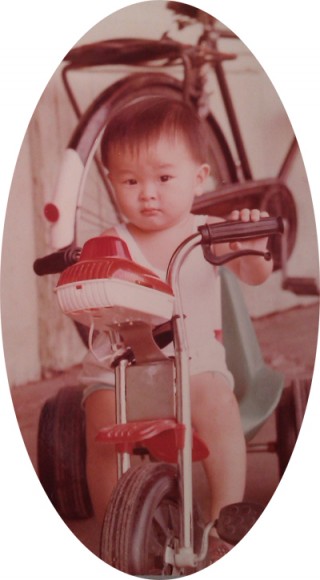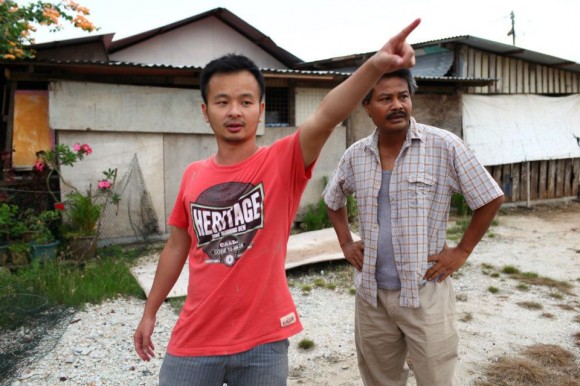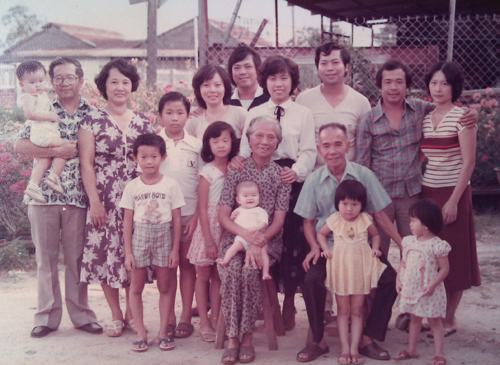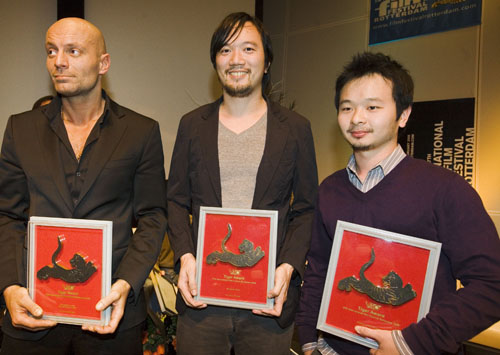LIEW Seng Tat is one of the most promising indie filmmakers in Malaysia. His debut feature film Flower in the Pocket (2007) has won numerous international awards. Previously, his short films Bread Skin with Strawberry Jam and Not Cool had also won top prizes at the Malaysian Video Awards.
The full-time filmmaker is now working on his second feature film In What City Does It Live?. On 2 Dec 2011, he released his latest short film Welcome to Kampong Radioaktif to raise public awareness on the proposed Lynas rare earth plant in Gerbang, near Kuantan, Pahang. It is one of four parodies in the Survival Guide untuk Kampong Radioaktif series.

“I’m not an activist, I’m just a filmmaker. I’m not against the rare earth plant; I know we need rare earth, but I don’t think the location is suitable. By doing a film with some parody and slapstick comedy, I hope it will make people laugh and think about the issue,” he told The Nut Graph on 22 Oct 2011.
In the interview, Liew shares his fond memories of growing up in Jinjang, the largest Chinese New Village in Malaysia; the incredible foreign support he has received to make Malaysian films; and his hopes for a country that still makes him feels like an “outsider”.
TNG: Where and when were you born?
I was born in 1979 and grew up in Jinjang, Kuala Lumpur. It has a bad reputation [for having] lots of gangsters. But it was safe for me. My family and relatives lived together in a wooden house. We never locked the main door and we didn’t need a fence. We had two mango trees in front of our house, so we had a neverending supply of mangoes. Anyone who passed by could just pluck them.
There were many dropouts and restless youths – I wouldn’t call them gangsters – hanging around kopitiams. Sometimes they broke into fights, breaking chairs and tables. I used to help out at my mom’s noodle stall at a kopitiam, so I’ve seen some of the fights, but never really bloody ones [like we see in Hong Kong gangster movies].
Can you trace your ancestry?
I’m Hakka. My grandparents were born here, so I’m third-generation Malaysian.
Can you share some of your fondest childhood memories?
I remember we had a huge kitchen with a fireplace. We still used charcoal to cook then. And there was an open well, too. Behind the kitchen there were about 10 mini pools made of cement, which my uncle used to rear small fishes to supply to the aquarium. I used to play with the frogs and tadpoles in the pools (smiles).

I also kept tortoises, about 10 of them. They just kept breeding and a few times their eggs went missing. Now that I think about it, probably the rats or some other animals ate them.
It was a fun childhood. I used to catch fighting spiders, too. I kept them in a box like a pet and fed them with mosquitoes or flies. We used to let them fight and watch them kill each other. [In hindsight], it was very brutal…
How was school like?
I looked forward to going to school – SK La Salle Jinjang – as a kid. We flew kites, played gasing… Nowadays, you don’t see kids playing these games anymore. Instead they play video games, [with] iPads and iPhones.
We were very adventurous back then. When I was around Standard Three (nine years old), I went camping with my sister and her friends. They were only two years older than me. The four or five of us took a bus to Templer’s Park and set up camp in the middle of a jungle. We only realised it [might not be] safe when night fell. It was pitch-black and there were lots of strange animal sounds. That’s when I realised we shouldn’t have been there all on our own.
I also looked forward to going to school on Saturdays for the co-curriculum activities. I was in the Boy Scouts and we went on a few trips with our teachers. Once we went to a Malay [Malaysian] teacher’s kampung, I can’t remember exactly where it was but I’ve very fond memories of the trip. There we were, all these Chinese [Malaysian] kids in a Malay house. It was great to get to know the family. I remember we had durian for breakfast with rice, and went to the orchard for treasure-hunt activities.
Did you always know you would become a filmmaker?
I wanted to study advertising originally in university, but my father wouldn’t allow it. So I chose 3D animation. My father agreed because he thought it was a course with a great future. At that time, multimedia and IT (information technology) courses were very popular. I liked what I studied. After graduation, I worked as an animator for a few years.
Then Tan Chui Mui, my university classmate, asked if I was interested in making a short film. She knew I liked to tell stories. I got a script with her help, made the video, submitted it to the Malaysian Video Awards, and I won. I used the prize money to make my second short film, won again, and I thought: “There must be something going on here.”
Then I made the third and fourth short film, and finally my first feature film. Everything happened organically. Flower in the Pocket won awards in [the] Busan [International Film Festival in South Korea], Rotterdam in the Netherlands, Italy… I didn’t expect such an encouraging response. I was travelling for an entire year touring with the film.

The success of Flower in the Pocket opened many doors for me. I was invited to the Cannes Film Festival residency programme for about five months and wrote my second feature film script there. They paid for my accommodation and private French lessons, and hooked me up with other directors to encourage me to write.
I also represented Asia at the Sundance Screenwriters Lab, where I met Hollywood scriptwriters. It felt weird to present a Malaysian script to Hollywood people, but they liked the script and gave me a lot of advice. They also understood that I come from a different culture, so it was up to me whether to adopt their advice. They really cared about my story and they could remember what was written in the script, page by page. I felt like an orphan being adopted for the first time, to have people show you so much care and support. It was unbelievable.
I’ve been refining my second script, it’s called In What City Does It Live? and now it’s ready to roll. I’m just waiting for the complete funding to be in place. I’ve received foreign grants, but I hope to get some local support to complete the funding process so I can start shooting soon. Flower in the Pocket was shot with a low budget, small cast and crew in a short time. This time I’m more ambitious, I want to do it with a proper budget, cast and time.

How do you connect to these stories as a Malaysian? Are there any instances where you struggle with your identity?
As a Chinese [Malaysian] in this country, you’re used to not getting certain things and support. I wouldn’t have made any films if I sat there and waited for support.
I’m very proud to be a Malaysian when I’m overseas. I introduce myself as Liew Seng Tat, a filmmaker from Malaysia. I don’t have to explain I’m a Chinese Malaysian. And I become a Malaysian ambassador, explaining our culture and peoples to international audiences, many of whom are watching a Malaysian film for the first time. Tourism Malaysia should pay me for helping to promote the country!
But back here, I’m just a Chinese. An outsider. No matter how much I love this country, I don’t feel I belong here. Although I’m a Malaysian who was born and bred here, there are still people who think I’m a pendatang. We still hear nasty remarks asking Chinese Malaysians to go back to China.
Don’t tell me it’s just coming from one person. If one person thinks like that, he or she is representing a group of people. We’re still considered outsiders whether we like it or not. But I’m hopeful with the new generation. People are more politically aware now. Some of my friends who have never voted are now very passionate about politics and the country.
I think the people are getting smarter. [Politicians] can’t lie to us as easily as before.

What kind of Malaysia do you hope to see in future?
A Malaysia that cherishes the arts, creativity and culture. I’m not talking about Istana Budaya or traditional dances. Many people don’t realise the importance of arts and creative thinking. Our culture and education system is obsessed with marks and spoonfeeding the young.
I remember at the Berlin Film Festival, the organisers brought thousands of school children to the film festival. I thought they wouldn’t pay attention to the details in the film, but they did. During the question-and-answer session, the German children asked me critical questions. I was really impressed.
When I look back at our own country, do we give our children such international exposure? How often do we bring them out of the classroom to expose them to different cultures and languages, and open up their minds? ![]()
The book Found in Malaysia Volume 2, which was launched on Malaysia Day 2011, is now available in bookstores for RM50. It features previously unpublished interviews with Asha Gill, Lillian Too, Khairy Jamaluddin and Baru Bian. Volume 1 of Found in Malaysia, featuring 54 earlier interviews, is currently in its second print run and retailing at RM45.

